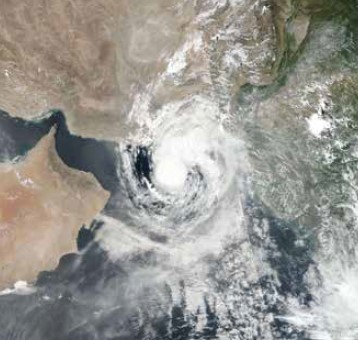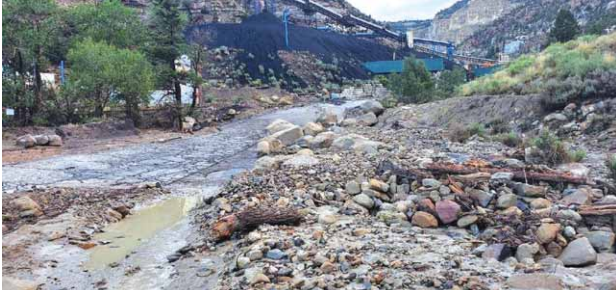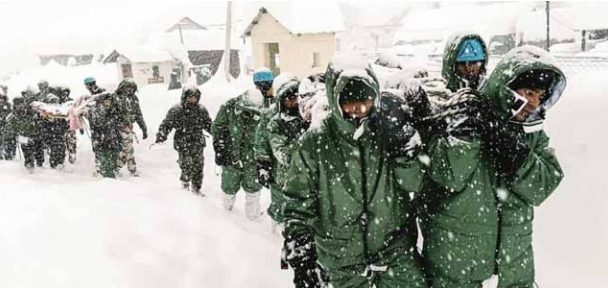Cyclone Asna emerged as a formidable tropical cyclone, impacting the states of Gujarat and Madhya Pradesh in India from August 25 to September 2, 2024. This rare meteorological event began as a low-pressure system in the northwest Bay of Bengal around August 16, gathering momentum as it moved inland. By August 26, the Indian Meteorological Department (IMD) confirmed the transformation of this depression into a deep cyclone over Rajasthan and Madhya Pradesh, setting the stage for a catastrophic sequence of events that would forever change the lives of many.
The cyclone’s wrath was felt most intensely in Gujarat, where torrential downpours led to widespread flooding. Over the course of its assault, Cyclone Asna unleashed up to 260 mm of rain in Vadodara and 120 mm in Ahmedabad within a mere two-day period. The heavy rainfall resulted in rivers breaching their banks, with the Vishwamitri River rapidly rising and flooding nearby areas. As of September 3, Gujarat had recorded an alarming 118% of its seasonal rainfall, with the Kutch region experiencing a staggering 180% increase. The consequences were devastating: 49 lives were lost, and extensive damage to infrastructure and agricultural lands ensued.
The devastation extended beyond human casualties. The flooding resulted in the destruction of thousands of homes and businesses, leaving a significant portion of the population vulnerable and displaced. Reports indicated that approximately 6,931 villages and 17 cities suffered power outages, affecting the daily lives of millions. A staggering 4,173 km of road infrastructure sustained damage, while the collapse of a crucial bridge between Bodeli and Chhota Udepur on the national highway halted vital transportation routes.

In response to the disaster, the National Disaster Response Force, alongside state authorities, mobilized 17 teams to aid in relief and rescue efforts. Their operations were pivotal in relocating over 42,000 individuals to safety, showcasing a coordinated effort to mitigate the impact of this natural calamity. Emergency measures included airlifting 53 individuals trapped in isolated regions, as local authorities scrambled to provide shelter and resources for the affected population.
Despite the valiant rescue efforts, the aftermath of Cyclone Asna left behind a stark reminder of the increasing severity of extreme weather events in the region. The storm’s effects were exacerbated by previous rains, which had saturated the soil and primed the landscape for flooding. Scientists at the Indian Institute of Technology Gandhinagar highlighted the correlation between urban development, changes in elevation, and disrupted drainage systems, attributing the flooding to both natural and man-made factors.
As the state government conducted damage assessments, initial reports indicated financial losses surpassing ₹250 crore (approximately $30 million) due to damage to public infrastructure and properties. The government committed to providing compensation to the families of the deceased, ensuring that affected communities received immediate financial assistance to help them navigate the crisis.
The human toll was not the only concern. The flooding devastated livestock, with reports indicating the loss of over 2,600 animals. Agricultural sectors in districts of Kutch and Saurashtra faced significant destruction, raising concerns about food security and economic recovery in the region. As the waters receded, local authorities began to address the daunting task of reconstruction, emphasizing the need for resilience-building measures to withstand future disasters.
As Cyclone Asna moved away from the Indian coast, it served as a grim reminder of the climate crisis and its implications for vulnerable regions. The storm’s unprecedented development and intensity left communities grappling with the harsh reality of climate change, urging both governmental and non-governmental organizations to prioritize disaster preparedness and infrastructure resilience. As families begin to rebuild their lives, the lessons learned from Cyclone Asna must be a call to action for stronger environmental policies and adaptive strategies in the face of increasingly severe weather events. The long-term implications of this disaster will resonate for years to come, marking a pivotal moment in India’s ongoing battle against the forces of nature.
Source:
www.livemint.com






